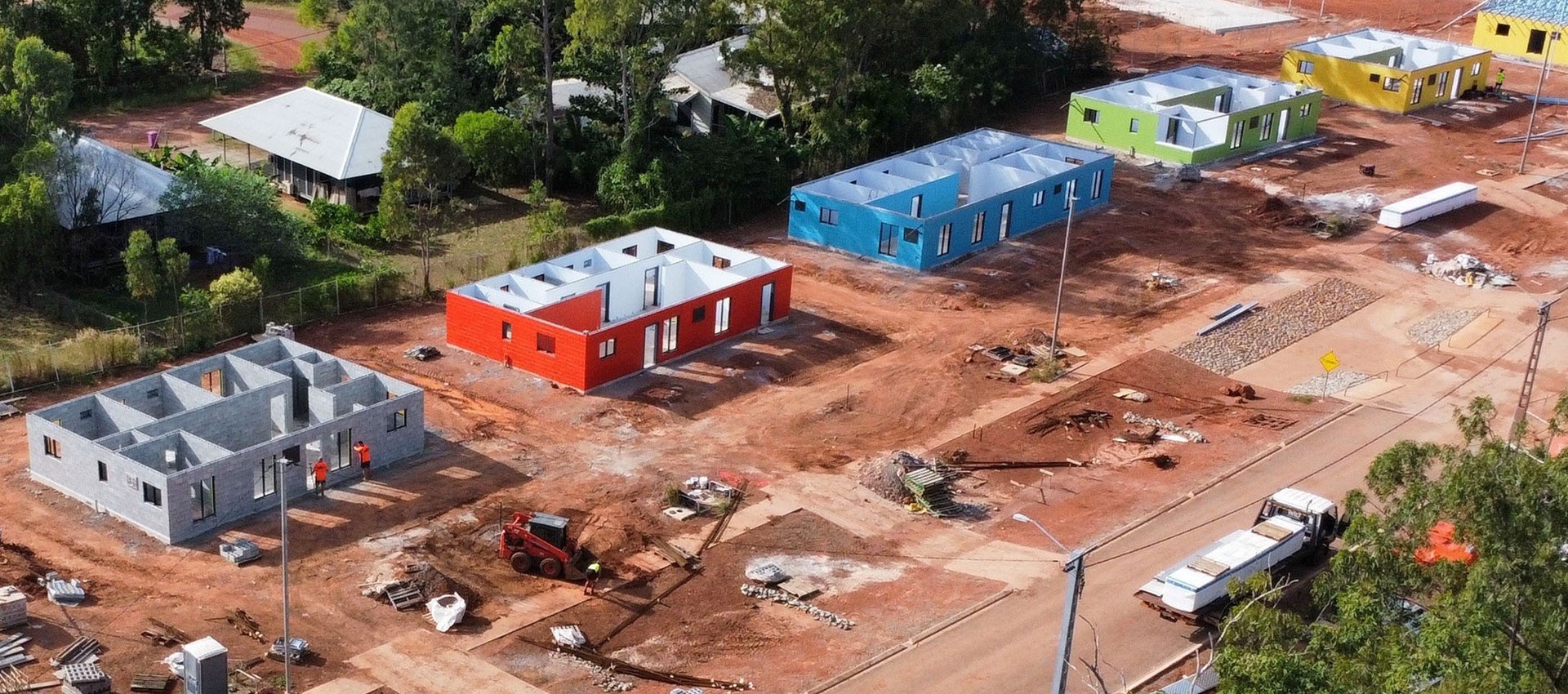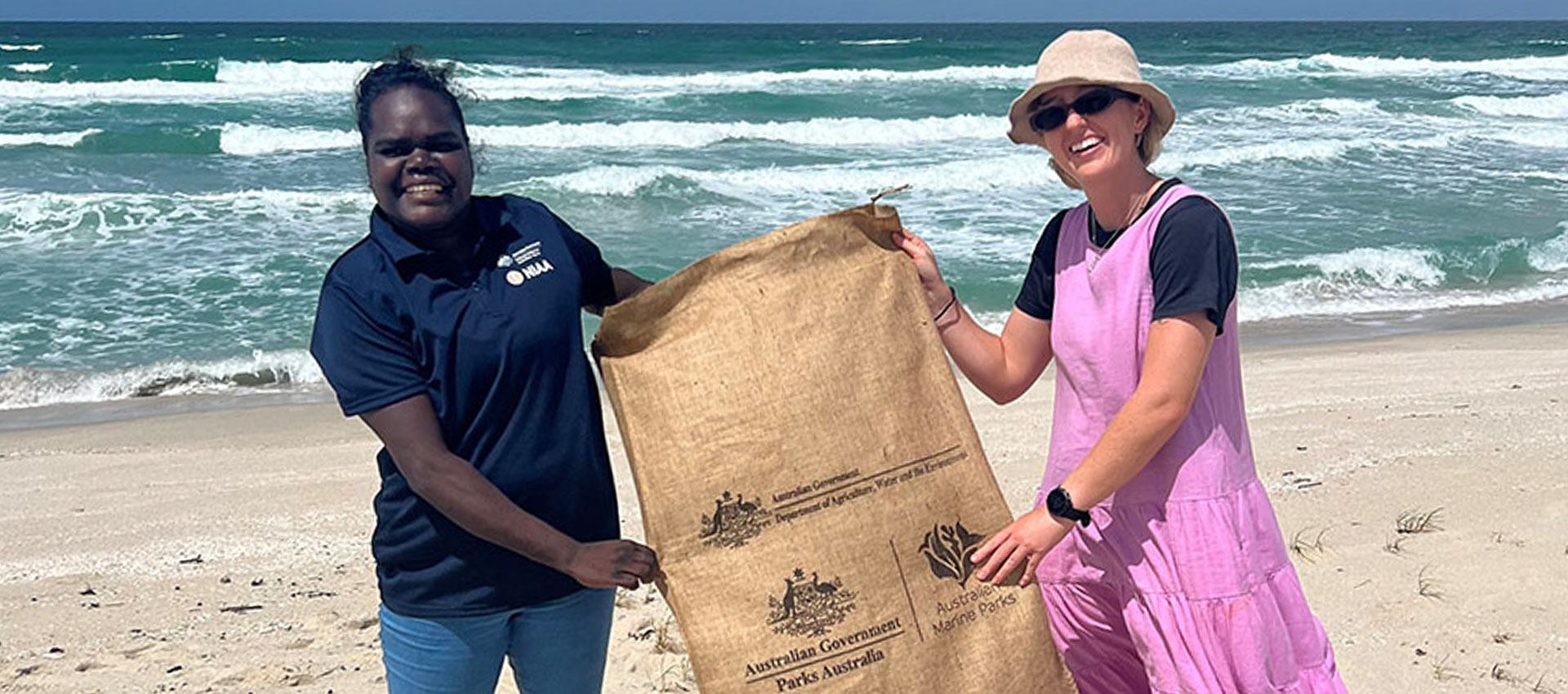
Image: Homes under construction in Yirrkala, Northern Territory. Photo courtesy of the Northern Territory Government.
To deliver our purpose, it is important First Nations people have a say on the policies, programs and services that affect them, particularly at the regional and local level. For this reason we are continuing to transition to more regionalised decision-making and delivery.
We are committed to strengthening efforts to work in partnership with First Nations peoples to ensure policies and programs are community-led and self-determined. This includes through engaging with the 6 place-based partnerships established under Closing the Gap in:
- Tamworth (NSW)
- Gippsland (Vic)
- Doomadgee (Qld)
- East Kimberley (WA)
- Western Suburbs of Adelaide (SA)
- Maningrida (NT)
We will also be working with a range of existing and emerging local and regional partnership arrangements, such as local decision-making bodies in the NT.
Through the Central Australia Plan (CAP), we are working with First Nations communities to ensure local voices are heard. In particular, we are working with the CAP Aboriginal Leadership Group (ALG), which provides advice on implementation and priorities under the CAP.
This includes the advice on the $30 million Remote Training Hubs Network, where the ALG has shaped training being delivered on Country, with consideration given to language groups, training needs and the requirement for transport between communities. This collaborative approach is ensuring initiatives meet communities’ needs.
On 20 June 2024, the Commonwealth entered into a ten-year Partnership Agreement with the NT Government, Aboriginal Housing NT, and the 4 NT Aboriginal Land Councils. The agreement embeds shared decision-making in remote housing and homelands investments and will help Close the Gap.
The Partnership Agreement is the first of its kind in NT housing and will inform the Commonwealth and NT government’s funding agreements, including the $4 billion ten-year agreement to halve overcrowding in remote NT and the 3-year agreement to continue to improve housing in the NT homelands.
Shared decision-making encourages greater community involvement and autonomy in investment prioritisation.
We continue to support Empowered Communities (EC) backbone operations as we:
- progress joint assessment and consideration of IAS investments in EC regions
- support opportunities for partnership with EC on new policy and program design
- refresh local partnership agreements with the 10 EC regions (see the ‘Our performance’ section in relation to our EC partnerships).
The NIAA is working to embed partnership and shared decision-making arrangements into IAS investment prioritisation in the context of the ongoing reform of IAS systems and processes (see ’Improving the impact and integrity of our programs and operations’). This aims to improve outcomes of IAS-funded activities and, over time, will encourage greater community involvement and autonomy in investment prioritisation.
In 2024–25, the NIAA is developing regional strategies to prioritise IAS investment that aligns with First Nations community and regional priorities. The regional strategies will:
- link to the Closing the Gap Priority Reforms and socio-economic outcomes
- consider opportunities to leverage mainstream policies and investment.

Image: Cleaning up the beach during the Rubbish on the Shore Think Tank 2024, East Arnhem Land, Northern Territory